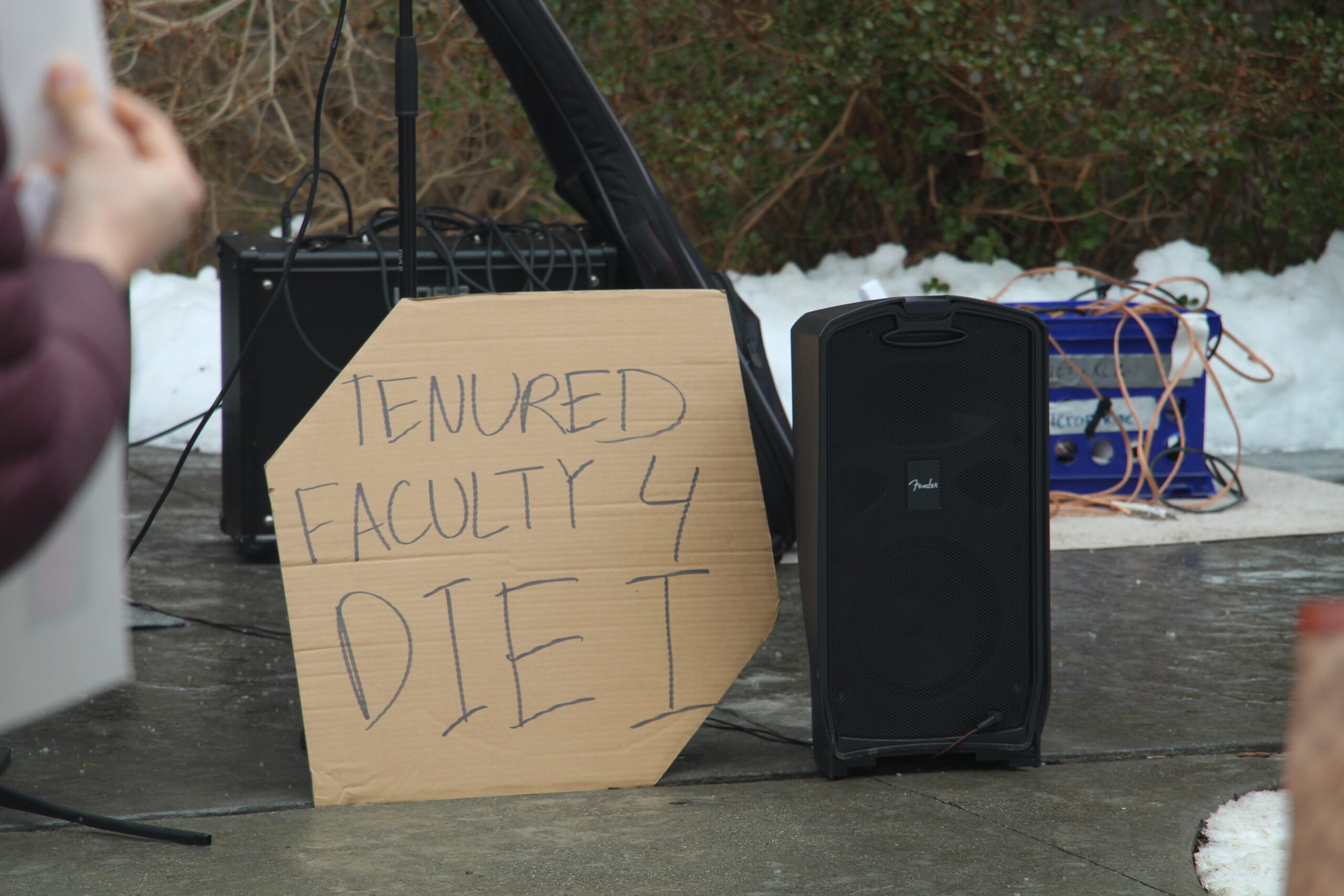“Take a picture, it’ll last longer” is a recognizable American saying, and it has some truth behind it. By the museums dedicated to art and photography depicting historical scenes, it’s clear that illustrations have lasting impacts, but are their legacies true to the stories they tell or do they have greater purposes than accuracy? A closer look at artistic interpretations of the classic American holiday of Thanksgiving gives an insight into this theory.
Many would recognize this first iconic painting: it’s one of American painter Norman Rockwell’s most famous works. It depicts a family, consisting of multiple generations happily gathered around a table while grandparents serve a robust turkey to complete a perfect Thanksgiving feast. The name of the painting is “Freedom from Want” and, according to the Norman Rockwell Museum in Stockbridge, Massachusetts, the piece is a part of a set of four oil paintings known as the “Four Freedoms,” each inspired by a different point of President Franklin Delano Roosevelt’s address to Congress in 1941.
Roosevelt’s speech painted a picture of what a postwar world would look like, where citizens would be free to speak, free to practice their own religions, and free from fear and want. Rockwell, who had been commissioned by the U.S. Army to paint pieces supporting the war effort before, now faced the daunting task of illustrating the ideals in the president’s address: a feat that Rockwell said in a New Yorker interview, “should have been tackled by Michelangelo.”
Rockwell had nothing to fear, however, because according to the Rockwell museum’s statistics, the Office of War Information created posters of the paintings along with the phrase ‘Buy War Bonds’ and printed four million sets. After the illustrations were shown in The Saturday Evening Post, the paper received 25,000 requests from the public for reprints of the art. When the set of paintings were sent on tour around the nation, they were seen by over a million people and raised 133 million dollars in war bonds and stamps.
Whatever it was about the allure of the life created in the paintings, Americans of the 1940s were most definitely buying into it. The scenes of peace and prosperity so desired by Americans were at the same time being used as symbols to fund a world war. Perhaps Americans saw in the paintings and in Roosevelt’s address, an America, and also a world, that could be changed for the better if American ideals were spread and if they all did their part to help. So does Rockwell’s artwork still mean anything to modern day Americans?
Today, millions of Americans still gather as families to have a feast together on Thanksgiving, and many still find the tradition quite important. In fact, according to CNN, Thanksgiving ranks number two on a list of Americans’ favorite holidays, second only to Christmas. And according to AAA in 2015, 46.9. million Americans will travel over 50 miles on Thanksgiving to consume 46 million turkeys. The scene shown in “Freedom from Want” might look a lot like the modern day Thanksgiving table, but do Americans today celebrate Thanksgiving so they can feel free from want? And are they free from want because on Thanksgiving they have food and family and all the things they need? Or are they free from want because they have so much excess? Excess, in this case, refers to the notion that they could want no more because they already have everything. Thanksgiving is by no means a regular meal. It is a feast, which is a want, but it is also a feast surrounded by family, which to many is a need.
So that’s modern Thanksgiving, but what about the first Thanksgiving? In 1915 Jean Leon Gerome Ferris created an image that would leave lasting stereotypes. The painting shows pilgrims in their iconic garb of black hats and black button down vests giving food to a group of Native Americans seated on the ground sporting feather headdresses. The work is titled “The First Thanksgiving” and the image is quite common, in fact many may read this and recall performing a skit about it in elementary school. But the first thanksgiving did not happen in the way Americans are led to believe it happened.
First, an examination of this painting’s inaccuracies. National Geographic reports that the clothing in Ferris’s painting is historically inaccurate, and Nathaniel Philbrick, author of the book Mayflower: The Story of Courage, Community, and War, suggests that the two groups would likely have been all sitting around fires cooking the meal and not at long tables and adds that the groups would be eating the food with their fingers, as forks did not come to Plymouth until later in the 1600s. But the image is about as inaccurate as it is consistent. A 1914 painting by Jennie Augusta Brownscombe which is similarly titled: “The First Thanksgiving at Plymouth” also consists of pilgrims at a long table, with utensils, while native americans are seated on the ground. The motif has been plastered upon just about every dollar store decoration and children’s book since.
This celebratory feast certainly happened, even if artists have failed to capture it to its most accurate extent. It is the glossing over of what happened before and after it that begin to paint a more realistic view of the first thanksgiving. According to a New York Times article titled ‘“Most Everything You Learned About Thanksgiving is Wrong,” Plymouth was such a nice area to settle in because it already had cleared fields and a spring. Why? Because plagues had killed all the native people living there. And what about the belief that pilgrims came for religious freedom? The article disagrees, describing how the pilgrims had religious freedom in Holland and that coming to Plymouth was about making money. In addition to seeking capital opportunity, they established their own religion as the only religion, which is really the opposite of religious freedom. Native Americans and pilgrims feasting together is a lovely diplomatic moment, but the deadly clashes that occurred between them later as well as the long history of brutality and injustice against the native peoples of America is the ending to the story that is often glossed over.
So, Thanksgiving: it’s a patriotic movement, it’s a moneymaker, it’s embedded in a web of falsehood, and it’s often painted through a rose colored lens. It’s about family and connections that are strong in the moment, but fragile in the long term, severed by war or conflict. Painters of the holiday can empower a nation, raise millions of dollars, or create a stereotype that will endure for generations, but whatever the result is, it proves that sometimes it is the brush, rather than the pen, that is mightier than the sword.









